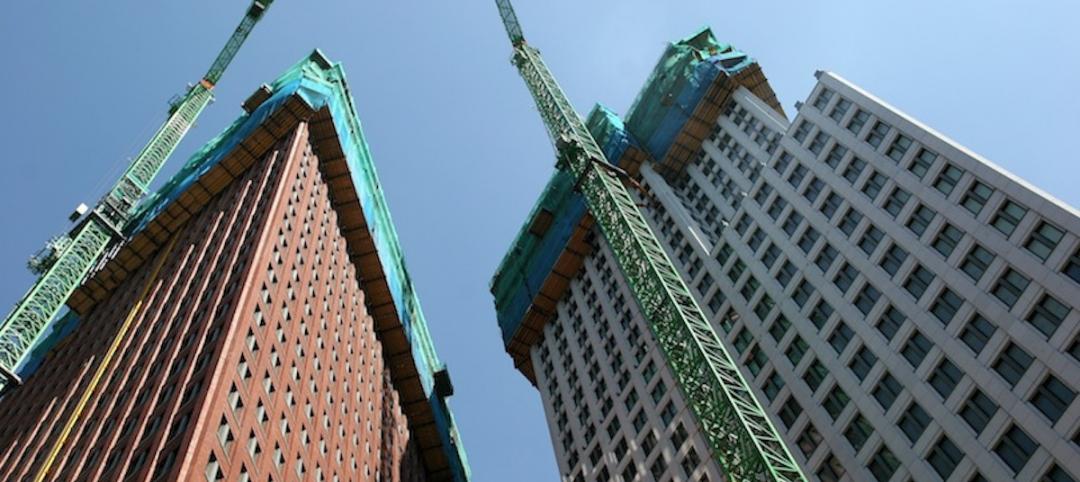Following an intense winter season, the Associated Builders and Contractors' Construction Backlog Indicator (CBI) revealed a 3.2% decline during the first quarter of 2015.
According to ABC, construction firms across the country reported a revenue-weighted average CBI of 8.4 months, 0.3 months below the final quarter of 2014.
The Northeast saw its backlog decline by 10.2%, a change of 1.04 months from the fourth quarter of last year. The Middle States reported a 0.7% decline to 0.05 months in construction backlog and the West experienced a 25.3% drop or 1.88 months. The South was the only region to report an increase in construction backlog as it rose 5.9% or 0.55 months.

"Weather and a myriad of other factors always make the first quarter CBI difficult to interpret," said ABC Chief Economist Anirban Basu. "A brutal winter may have postponed project-related work, including the signing of contracts. The first quarters of 2012 and 2014 also experienced CBI declines that effectively were reversed during the ensuing second quarters."
Additionally, sharp reductions in oilfield investment affected companies in the Middle States while the West Coast port slowdown impacted firms on the western side of the country. However, the backlog should re-establish an upward trend as the year's warmer months approach and ports return to normal.
Despite the backlog decline, continued job growth, low fuel prices, and wage gains are expected to lead to an increase in consumer spending.

Related Stories
| Feb 23, 2015
Where are the iconic green buildings?
What does a green building look like? How would you know one if you saw one? Maybe a trivial question to some, but of great interest to architects, designers, and other members of the Building Team as the rapid evolution of sustainable buildings continues apace.
University Buildings | Feb 20, 2015
Penn strengthens campus security by reviving its surrounding neighborhood
In 1996, the University of Pennsylvania’s sprawling campus in Philadelphia was in the grip of an unprecedented crime wave. But instead of walling themselves off from their surrounding neighborhoods, the school decided to support the community.
Engineers | Feb 20, 2015
PwC reports record year for M&A activity in engineering and construction
Worldwide engineering and construction industries closed 218 M&A deals in 2014 worth more than $172 billion, according to a PwC report.
Multifamily Housing | Feb 19, 2015
Is multifamily construction getting too frothy for demand?
Contractors are pushing full speed ahead, but CoStar Group thinks a slowdown might be in order this year.
Building Materials | Feb 19, 2015
Prices for construction materials fall in January, following plummet of oil prices
The decline in oil and petroleum prices finally showed up in the produce price index data, according to ABC Chief Economist Anirban Basu.
Codes and Standards | Feb 18, 2015
USGBC concerned about developers using LEED registration in marketing
LEED administrators are concerned about a small group of developers or project owners who tout their projects as “LEED pre-certified” and then fail to follow through with certification.
Office Buildings | Feb 18, 2015
Commercial real estate developers optimistic, but concerned about taxes, jobs outlook
The outlook for the commercial real estate industry remains strong despite growing concerns over sluggish job creation and higher taxes, according to a new survey of commercial real estate professionals by NAIOP.
Museums | Feb 18, 2015
Foster + Partners' National Museum of Marine Science and Technology breaks ground in Taiwan
The museum will be home to an aquarium, exhibition space, and waterfront views.
University Buildings | Feb 18, 2015
Preparing for the worst: Campus security since Virginia Tech
Seven years after the mass shootings at Virginia Tech, colleges and universities continue to shake up their emergency communications and response capabilities to shootings and other criminal threats.
Office Buildings | Feb 18, 2015
Why the mobile workplace isn't always mobile
Perkins+Will’s Janice Barnes addresses the nuance in mobility types and explains the importance of defining terms upfront.














